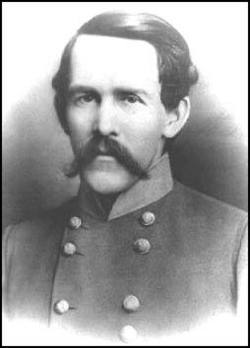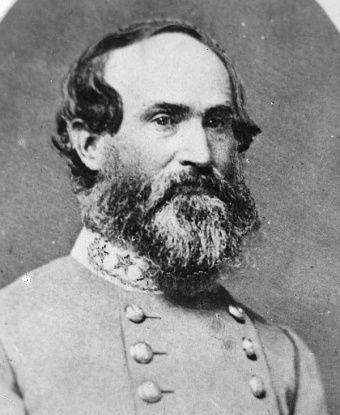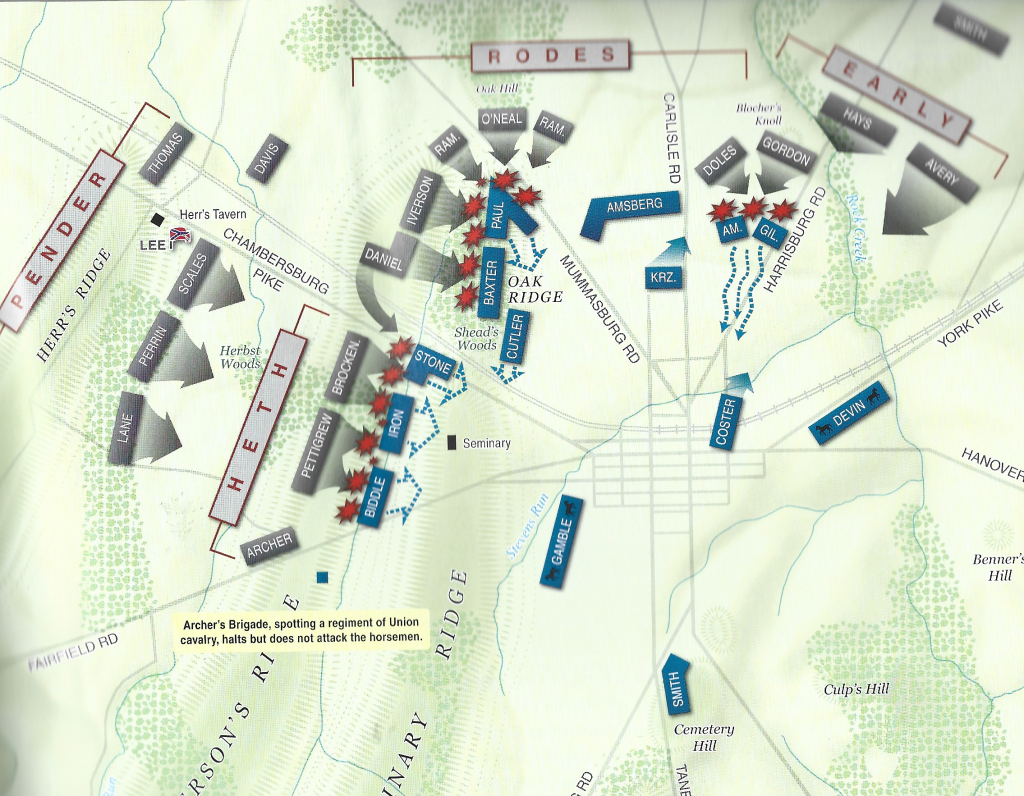Through the day, the battle between Heth’s men and the First Corps forces see-sawed back and forth but was largely a stalemate. But in the early afternoon, the situation changed. MG Rodes’ Division arrived from the north. They occupied an area of high ground just to the north and west of the city, known as Oak Hill. But here, too, Rodes made a tactical error. Instead of sending in his infantry he chose to bring up his artillery to ‘soften up’ the Union line. All this really did was alert the Union commanders to his presence. They managed to shift some of the right flank units to face north. When they did finally attack, his three brigades did so in an uncoordinated fashion and each was driven back in turn.
Almost simultaneous with Rodes arrival, the Union Eleventh Corps under MG Howard was entering the fray. He moved his corps through the city and began taking up positions north of Gettysburg thereby extending the Union line far to the east. Another nearly overlooked clash took place when one of his regiments moved forward to occupy a hilltop in front of the main Union line. These men were quickly attacked from three sides and were nearly wiped out. It seemed as if Union units had a propensity to act on their own and place themselves at great risk.


About 4PM two uncoordinated events took place that finally decided the outcome of the Day 1 battle. In the west, at the angle where the Union line turned east, Heth’s left flank and Rodes’ brigades managed to coordinate a two-pronged attack that hit the Union line like a tsunami wave. At the same time, MG Early’s Division was marching in on the far right Union flank. The Union units there were newly arrived and had yet to firmly establish their positions. Early quickly shifted from marching to attack formation and smashed into these unprepared units.
From east to west, then north to south, the Union line began to crumble. Eleventh Corps units fell back into the city in disarray. Seeing their right flank unprotected, First Corps units also began to fall back. Some into the city; others in a more orderly fashion headed south to the cemetery rally point. Reynolds’ orders were being carried out hours after his death. It was as if the Union line was being unzipped!

Far to the south, a second brigade of Pender’s Division were forming up to launch an attack on the left flank of the Iron Brigade. Before they were completely in position, the Iron men simply stood up and marched away as if they were on parade. They fell back into the city en route to the cemetery.
Had Col Perrin’s Rebel brigade advanced to follow the Iron men, he might very well have disrupted the movement of the Union forces as they emerged out of the south end of the city. In addition, he would have forced the Iron Brigade to make a slower fighting withdraw. Had Perrin captured Union men as they made their way towards the cemetery the Union strength might have been greatly reduced.
=======================
Had GEN Robert E. Lee been in a proper state of mind and health on the morning of 1 July 1863, he might have noted that Oak Hill to the north of Gettysburg was the perfect vantage point from which to direct the battle that was unfolding before him. As it was, he and LTG A.P. Hill were looking on at ground level from the woods of Herr’s Ridge about a mile west of the city. The ground before him was flat rolling hills, but he really had no perspective of the terrain.
As it was, we know that he surmised that Hill’s officers had the skirmish well in hand and he departed for his scheduled meeting with LTG Longstreet. He had no way of knowing that the minor skirmish he thought he was witnessing would soon develop into a clash of titans.
A few hours later, mid-afternoon, LTG Ewell and MG Rodes arrived on Oak Hill as they moved south to close on the ANV. Instead they stumbled into a battle. As they gazed south and west, they watched the ebb and flow of Heth’s division clashing with the Union First Corps.
For whatever reasons, Lee’s Army always seemed to find the most advantageous artillery positions. Marye’s Heights and Malvern Hill in recent battles had been decisive. They immediately grasped the implications. As rapidly as possible 8 cannons were dragged to the top of the hill and began to lob shells in enfilade to the Union line.
Had they cared to look, from this northern vantage point, they could have picked out Culp’s Hill and even Big Round Top off in the distance to the south. The intervening hills would likely have blended together but those two crests would have stood out. Of course, Ewell knew that MG Early’s Division was due to arrive from the NE in a short time. Ewell likely had a fleeting opportunity to win the Battle of Gettysburg!
Not too long after Early’s Division broke the back of the Eleventh Union Corps and ‘unzipped’ the entire Union line, Lee got his first look at the terrain south of the city and immediately recognized the key role that Culp’s Hill could play in the coming hours.
One has to wonder if when Ewell received Lee’s infamous order to have Early occupy Culp’s Hill “if practicable” did Ewell think back in hindsight that he too had seen (or could have seen) that location from his perch on Oak Hill. Unfortunately, Ewell was no Robert E. Lee or Stonewall Jackson whom he had replaced as Corps Commander. He simply didn’t have the depth of knowledge nor the greater appreciation for how a battle could unfold to have recognized the critical nature of that far off hill.
In short, there had been a fleeting opportunity for Ewell to have been the hero of the Confederacy. Had he had the foresight to order Early to avoid clashing with Howard’s troops north of the city and to move as expeditiously as possible to that hill, he’d likely have won the day if not the war!
Instead, he and Rodes focused on the clash occurring at their feet and decided to use the heights to bring artillery to bear. That bombardment was certainly not without effect. However, what it did was alert the Union officers to his presence to the north. They were able to shift lines of men from facing west to north. So that when Rodes’ three brigades finally did attack, they were beaten back. It also did not help the Rebel cause that these three brigade commanders had failed to coordinate their attacks and were able to be repelled as each attacked individually. Following Early’s successful routing of the Union far right flank, they did finally coordinate with Heth’s left flank and together they penetrated the Union line at the corner where it changed directions. By this time the battle was all but over and the Union troops were withdrawing into the city to find their way south to the designated assembly point at the town cemetery.
For the past 160 years, historians have debated the role of Lee and Early in the failure to occupy Culp’s Hill. Ewell’s name is never really mentioned except as the conveyer of Lee’s order to Early. He could have been so much more of a hero.
